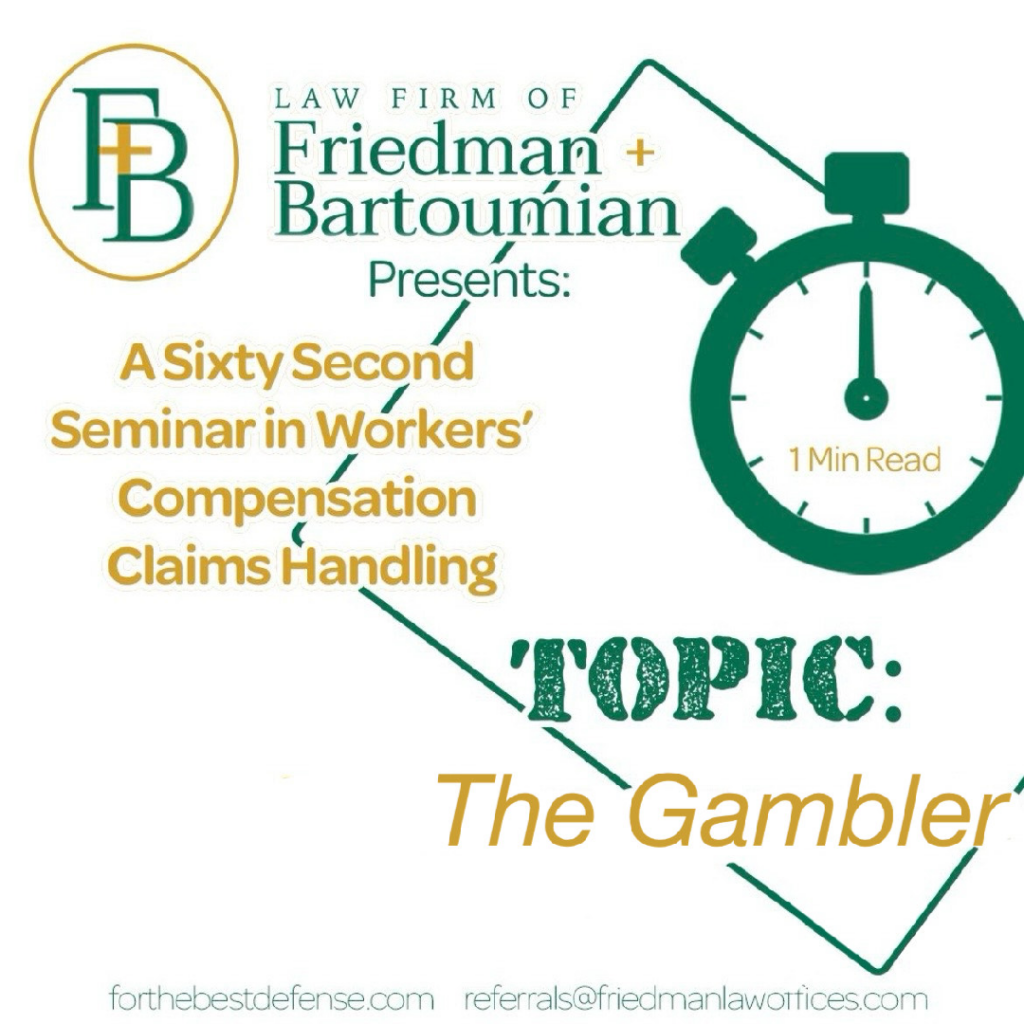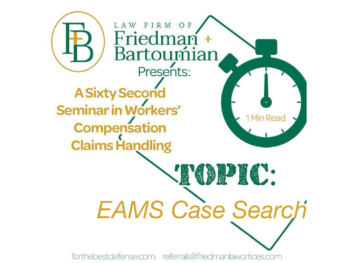
It is truly puzzling how certain parties at the appeals board gamble by proceeding to trial when they have no realistic chance of successfully litigating a dispute. It’s as if they somehow convinced themselves they are holding a winning hand. They usually end up losing badly. The purpose of today’s blog is to identify four scenarios where employers should consider settling their dispute rather than proceeding to trial.
- First of all, in the 35+ years we have been handling workers’ compensation defense we have yet to see an employer successfully litigate a LC §4551 Petition For “S&W Against The Employee.” The applicant has already been injured and a judge is not about to compound the injury by taking away half their benefits. However, as mention in a past blog, the purpose of filing a Petition for S&W Against The Employee is not to reduce benefits, but instead, to offset an S&W filed against the employer. This tactic enables both sides to drop their respective penalty petitions upon settlement of the case without paying anything extra to do so. It also gives the judge the opportunity to play King Solomon by dismissing both petitions if the parties are unwilling to voluntarily withdraw their respective petitions.
- It is often unproductive to file a “Petition to Reopen to Reduce” a previously issued award. While the petition is in litigation the previously issued PD award must still continue to be paid, which means applicant attorney is in no hurry to move this case along and will delay resolution as long as possible. In addition, if an employer is unsuccessful in reducing the award, AA will be awarded a supplemental attorney fee to be paid by the claims administrator at a rather expensive hourly rate.
- No matter how much surveillance is conducted the results will never completely offset objective medical evidence of disability, such as surgery, MRI test results, and X-rays. The best outcome surveillance can achieve is to mitigate, not eliminate, a PD award when objective medical evidence of injury and disability exists. It is just plain unrealistic to anticipate that an injury involving back surgery will result in absolutely no PD simply because surveillance films may suggest otherwise.
- Lastly, when a judge must decide between two admissible MMI reports, where the opinions expressed in both are based on substantial evidence, the WCJ will rely on the report producing greater benefits for the employee. We have never seen a single successful appeal where the employer argued the judge should have relied on the report finding less disability when both reports were based on substantial evidence.
Again, we urge employers not to gamble or convince themselves into believing they hold a winning hand whenever dealing with any of the four scenarios mentioned today. Also, keep in mind that the appeals board is mandated by statute under LC 3202 to liberally interpret the law for the purpose of extending workers’ compensation benefits. We can all learn a valuable lesson from Kenny Rogers in his song, “The Gambler”:
You got to know when to hold ‘em
Know when to fold ‘em
Know when to walk away
And know when to run.
We at F+B are here to partner with our friends and clients to analyze situations, provide a strong defense, and apply innovative settlement strategies.


 Bypassing UR and the $10,000 Rule: A 60-Second Seminar in Workers’ Compensation Claims Handling
Bypassing UR and the $10,000 Rule: A 60-Second Seminar in Workers’ Compensation Claims Handling
Leave a Reply